Programming with Constructive Destruction, a guest post by Austin Ferraro
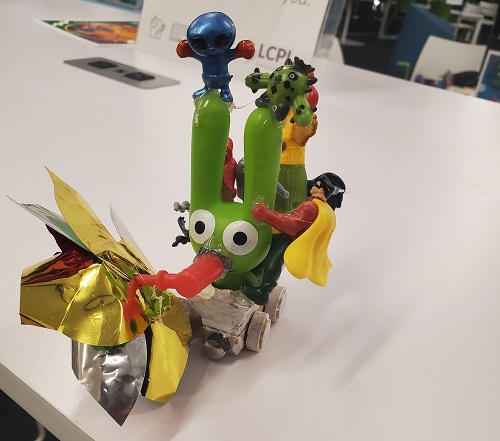
I am fortunate enough to work in a library with no shortage of teens and a gorgeous Teen Center. Our daily Teen Center door count is in the hundreds, with after school on Fridays being the time we see the most teens – in part because we have two nearby middle schools and a bus stop just up the hill. They get out of school, go directly to the gas station to stock up on energy drinks and huge, sugary slushies, and then come spend hours at the library.
So in other words, our library can be the center of absolute chaos on Friday afternoons.
In late 2021 we started to see some real challenges with how our teens and our non-teen-staff were interacting. The massive amount of unfocused energy our middle schoolers especially bring into the library space and the larger clumps they tend to travel in on Fridays were intimidating to some of our staff, and even in the Teen Center there were behavior struggles. We were also fighting a losing battle against the remnants of straws, Takis bags, and anything else they could get their hands on to destroy while they were hanging out from becoming Teen Center decor. Despite our best efforts, monitoring clean-up for waves of middle schoolers coming and going from a room full of at least forty of them at a time with that much unstructured energy was not feasible – banning food and drinks long term isn’t an option for us either.
When we hit 2022, I decided to try something ridiculous. If the teens were going to come in like chaotic whirlwinds and leave destruction in their path no matter what we did…why not just encourage it? I had seen a post from a librarian who had done a program where they provided their teens with old McDonald’s toys, scissors, and glue guns so the teens could make “Frankentoys” around Halloween. In that situation it was an advertised and controlled program but since it seemed to require very little direction, I thought it was the best place to start. I sourced McDonald’s style toys from coworkers who were thrilled to get them out of the house, then on the day of the program poured them on to two tables in the teen center, left out hot glue guns and scissors with the briefest written instructions in a flyer stand on the table and waited to see what happened.
ADVERTISEMENT
ADVERTISEMENT
It was an amazing success. It gave the teens something to do while they socialized, it gave non-teen-staff the opportunity to redirect teens by telling them that they could cut up toys if they went to the teen center, and afterwards it gave us the joy of experiencing the true monstrosities that they came up with. We had around thirty teens participate, with more teens clustering around just to see what was going on. The only thing I had to do was distribute glue sticks when the supply on the tables ran out, and make sure that the hot glue guns got unplugged when one group of teens left if another didn’t immediately take their place.
Since that worked out well, I began a rotating series of these programs that I have dubbed constructive destruction. We consistently get around thirty teens who actually participate, with more who just watch what’s going on. By no means are these my original program ideas, but by simplifying them down as much as possible and placing them in the physical space that the teens are already occupying, I consistently get much more engagement than I would if I ran them separately and our teens have an outlet for their destructive energy. This is what I have seen success with, ordered from least to most staff involvement necessary:
Frankentoys
Materials: McDonalds toys or similar (try to avoid ones with hard plastic, avoid soft toys with plastic beads in them at all costs), scissors, glue guns and hot glue sticks
Teens can use the scissors to cut up and maim toys, then use the glue guns to glue their new monstrosities together. A lot of the time, the teens have no interest in taking their creations home with them which often means that you can re-use the toy materials if you’re willing to do some deconstructing yourself.
Build-A-Squishy
Materials: memory foam (sometimes listed as upholstery foam) cut into squares at least 2”x3”, colored sharpies, and scissors.
Teens can use the sharpies to sketch out the design they would like to make, then use the scissors to cut the foam into that design. Sometimes they get really into it and figure out how to make really cool 3D squishy toys – and sometimes they just cut up the memory foam at random. It’s a pretty even split.
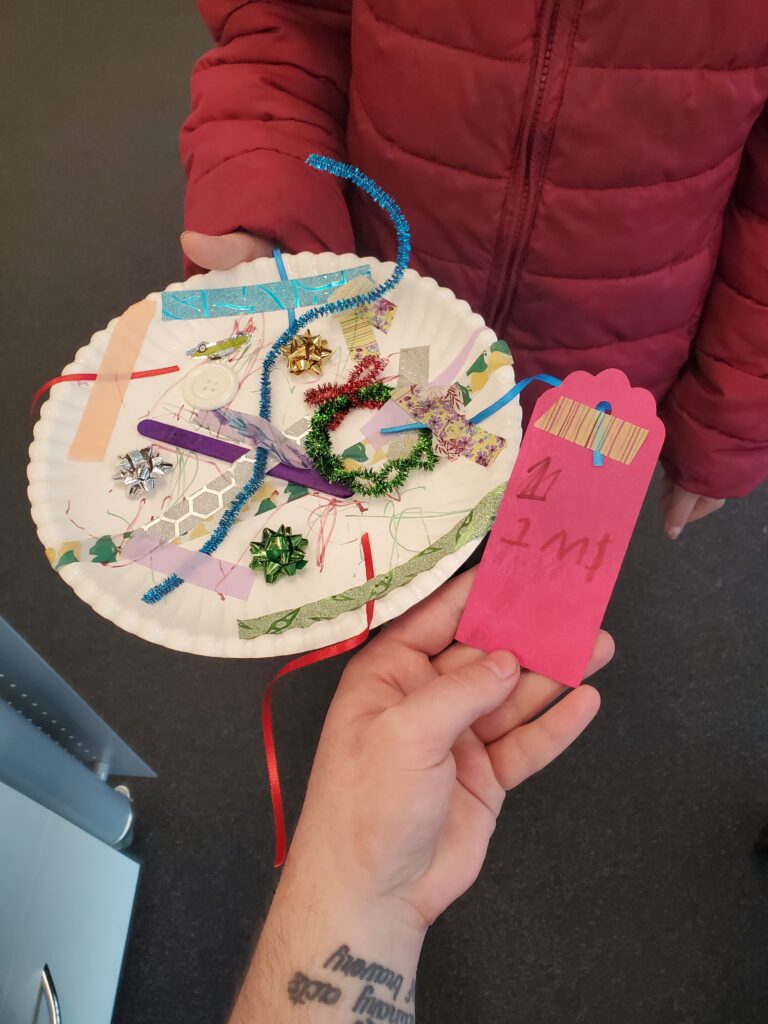
Bad Art
Materials: all the craft supplies that your branch has been holding on to “just in case” for the last three to five years, glue sticks, scissors, and flattened discarded boxes (think pasta box size) or paper plates.
The only goal of this one is to make art, but bad. There are no further instructions. If you’re feeling very inspired, you can award prizes for particularly bad art.
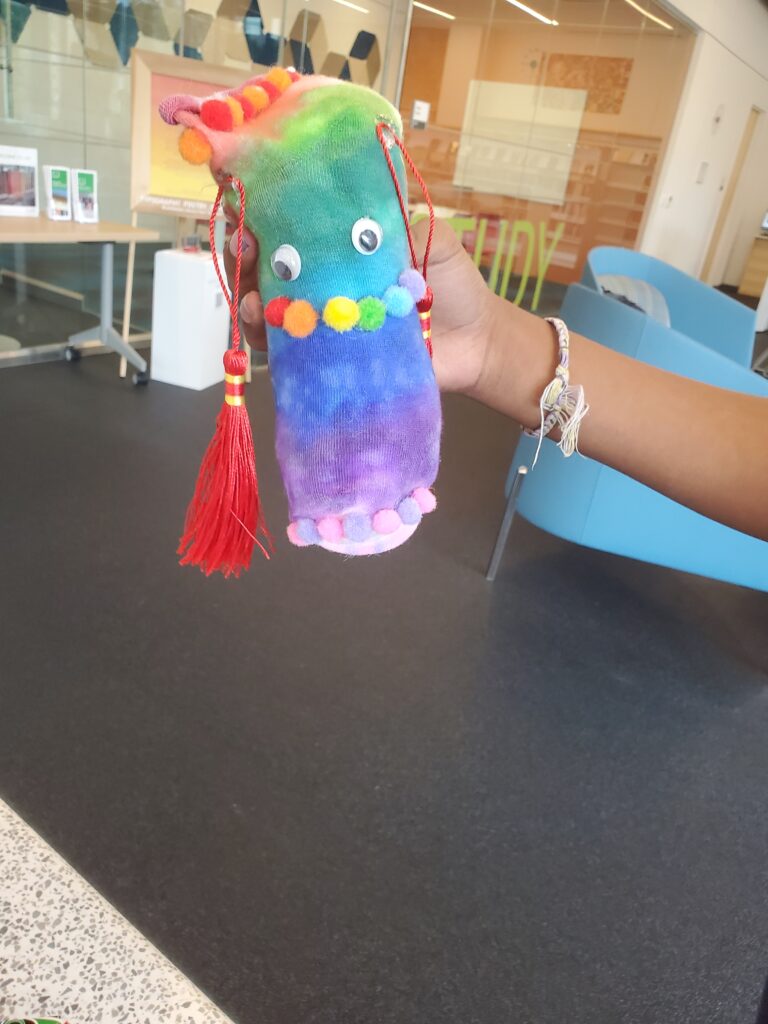
Tie-Dye Monster Mania
Materials: isopropyl alcohol in small and sealable containers, pipettes, colored sharpies, white fabric (socks and thin gloves work well), all other craft supplies your branch has been holding on to “just in case”, googly eyes, stuffing, scissors, glue guns, and hot glue sticks.
Encourage teens to use the scissors to cut up the white fabric (again, I use socks and thin gloves) as desired, then scribble all over them with sharpies of different colors. When they drip the alcohol over the sharpie scribbles, it will result in a tie-dye effect. Then they can use the glue guns to turn their tie-dye into cute little monsters. We have yet to have an issue with having isopropyl alcohol out in small containers with pipettes, but if there is a concern you can add a note to the written instructions saying where to pick up and return the isopropyl containers to.
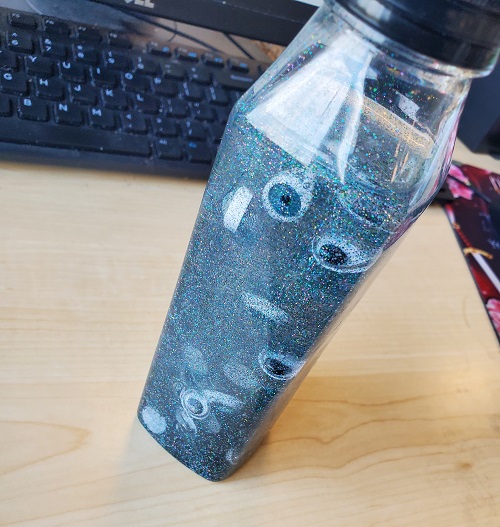
Creepy Sensory Bottles
ADVERTISEMENT
ADVERTISEMENT
Materials: clear Elmer’s glue, glitter, warm water, sequins, sealable bottles, and any random small items you think might be entertaining. My teens really enjoy doll eyes, fake teeth, and resin cheese wedge models – they have requested tiny plastic babies for the next time we run this.
Because my branch manager hates glitter with the unending passion of a thousand suns, I actually pre-prepare bottles of glue with glitter of different colors suspended in them. Teens get their own sealable bottle that they can pour the glitter glue into and mix as many colors as they’d like. Then they add whatever other items they so desire, then come to the desk where I pour the warm water into. The ideal consistency is about half glue, half warm water. If you’re concerned about these getting re-opened inside the library, you can also hot glue the bottles shut. You can also use oil instead of glue, but the end result is generally less satisfying and oil is harder to clean up.
Constructive destruction programs haven’t resolved all our challenges, but they have made it substantially easier to redirect the unfocused energy our teens bring to us on Friday afternoons. It’s also made it easier for us to see when they’re ready to move on from the after-school snack part of their library stay, which has helped us nudge them into better clean-up habits (…at least half the time, anyway). We consistently get approximately half the teens who come in to the Teen Center on a Friday participating at one time or another in that three hour after-school window and since these programs require minimal staff attention while they’re running and can be cleaned up when convenient, they really help on those afternoons and evenings when we’re short staffed. Because these programs can be so modular and easy to store, many of them are easy to whip out for any day that we have an influx of teens with a lot of energy and no other constructive outlet.
And hey, cleaning up the remains of mutant toy creations and memory foam scraps? Much better than Takis in my book.
Meet the author
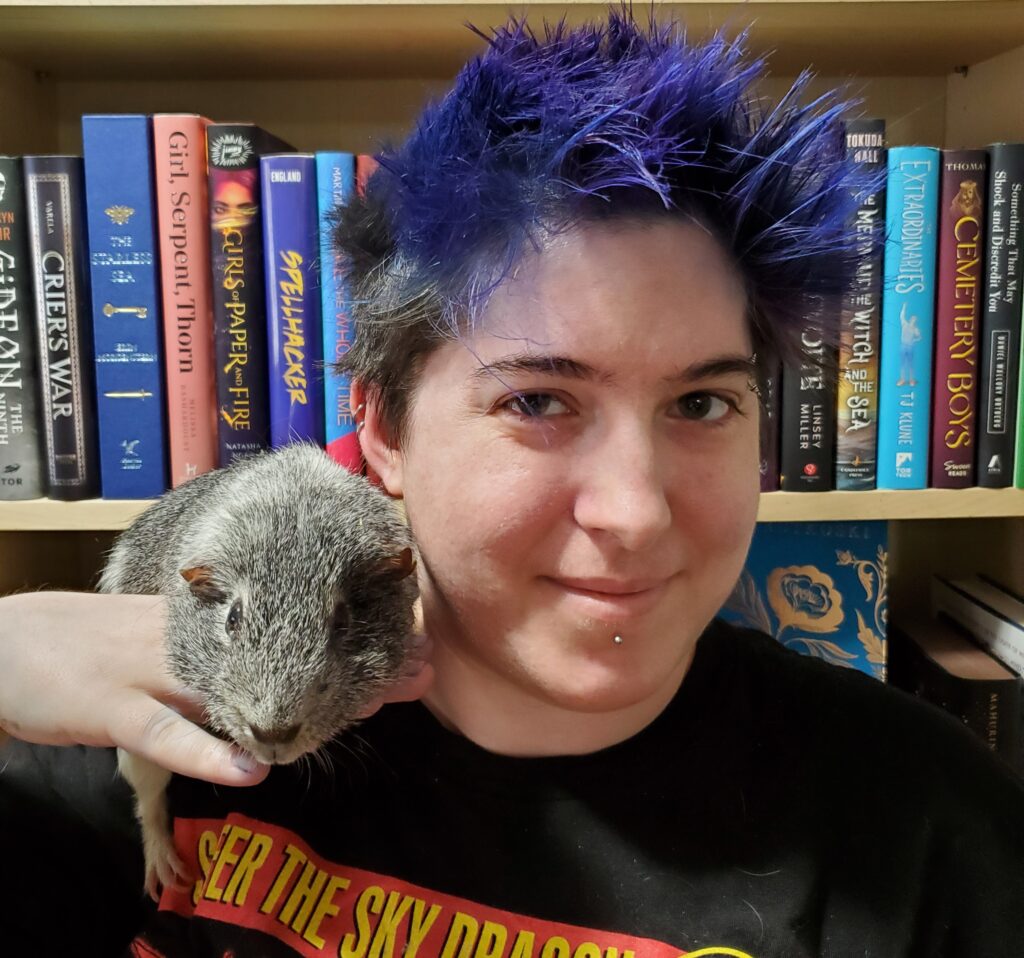
Austin Ferraro is a teen librarian with a background in academic libraries, a brain full of ADHD-fueled ridiculous ideas, and too many books to read. He works at Loudoun County Public Library in northern Virginia and lives nearby with his spousecreature and their small menagerie. You can find him on Instagram and Twitter @teatime4turtles.
Filed under: Guest Post
About Amanda MacGregor
Amanda MacGregor works in an elementary library, loves dogs, and can be found on BlueSky at @amandamacgregor.bsky.social.
ADVERTISEMENT
ADVERTISEMENT
SLJ Blog Network
2025 Books from Sibert Winners
Fuse 8 n’ Kate: I Will Never Not Ever Eat a Tomato by Lauren Child
Betty and Veronica Jumbo Comics Digest #334 | Preview
Fifteen early Mock Newbery 2026 Contenders
When Book Bans are a Form of Discrimination, What is the Path to Justice?
ADVERTISEMENT







